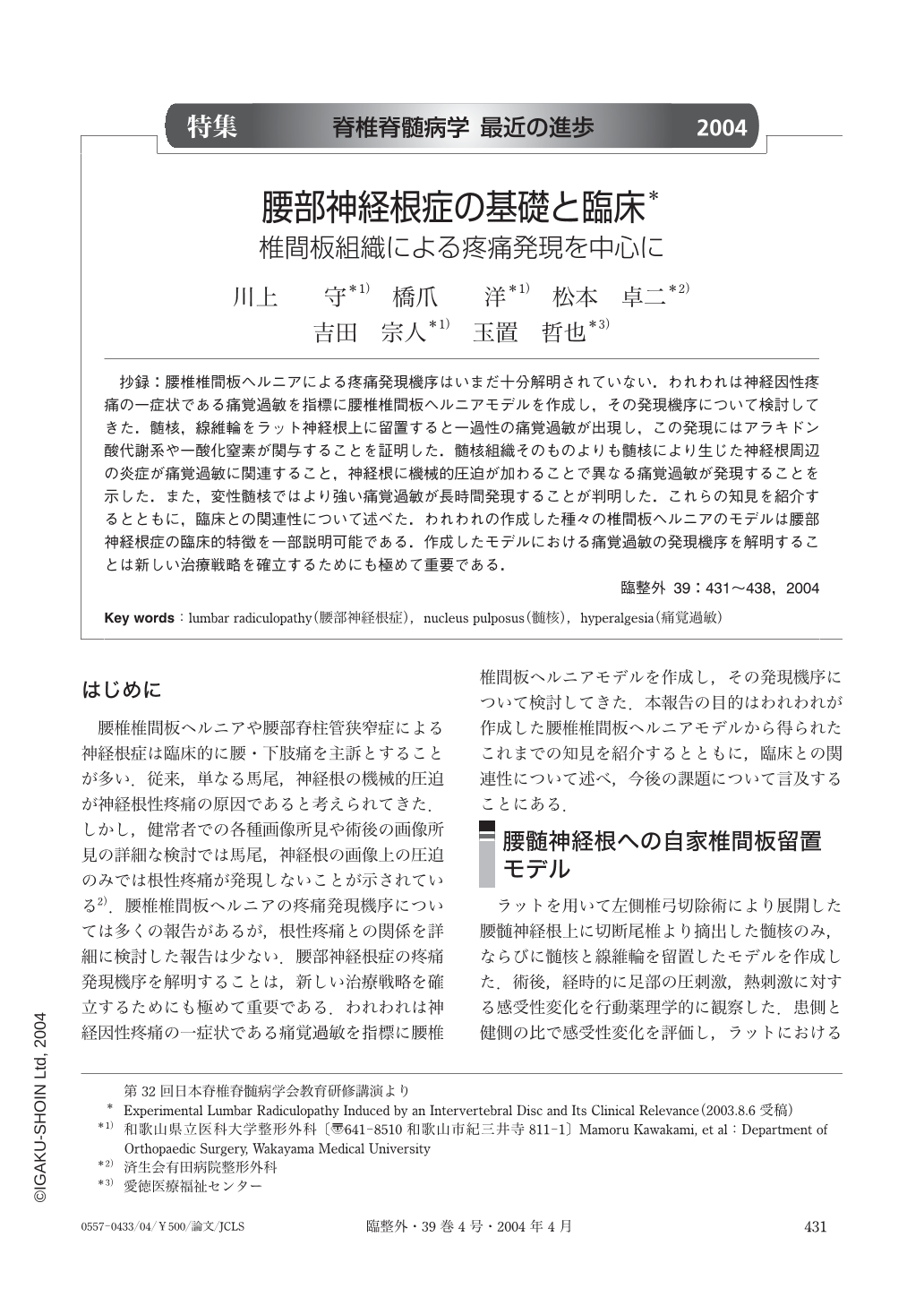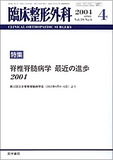Japanese
English
- 有料閲覧
- Abstract 文献概要
- 1ページ目 Look Inside
抄録:腰椎椎間板ヘルニアによる疼痛発現機序はいまだ十分解明されていない.われわれは神経因性疼痛の一症状である痛覚過敏を指標に腰椎椎間板ヘルニアモデルを作成し,その発現機序について検討してきた.髄核,線維輪をラット神経根上に留置すると一過性の痛覚過敏が出現し,この発現にはアラキドン酸代謝系や一酸化窒素が関与することを証明した.髄核組織そのものよりも髄核により生じた神経根周辺の炎症が痛覚過敏に関連すること,神経根に機械的圧迫が加わることで異なる痛覚過敏が発現することを示した.また,変性髄核ではより強い痛覚過敏が長時間発現することが判明した.これらの知見を紹介するとともに,臨床との関連性について述べた.われわれの作成した種々の椎間板ヘルニアのモデルは腰部神経根症の臨床的特徴を一部説明可能である.作成したモデルにおける痛覚過敏の発現機序を解明することは新しい治療戦略を確立するためにも極めて重要である.
The pathophysiological mechanisms of low back pain and radicular pain produced by lumbar disc herniation are still matters of controversy. We have created experimental models in animal and elucidated the mechanisms of hyperalgesia, measured on the basis of pain-related behavior, in the models. We found that application of the nucleus pulposus or anulus fibrosus to the nerve roots produced time-dependent reversible hyperalgesia in the affected hindpaw of the rat and that the hyperalgesia was related to bioactive substances in the arachidonic acid cascade and nitric oxide. We have also reported that the inflammatory granulation tissue around the nerve root is related to the hyperalgesia rather than to the nucleus pulposus itself and that mechanical compression of a nerve root after application of the nucleus pulposus produces a different type of hyperalgesia. In addition, we found that a degenerated nucleus pulposus obtained from an intervertebral disc after chronic mechanical compression of the tail of the animal induced severer and longer hyperalgesia than a normal nucleus pulposus. The precise mechanism of the exacerbation of the hyperalgesia is still unknown. We describe and review our results obtained in experimental studies and discuss their clinical relevance. Several of the experimental models of lumbar disc herniation we utilized may partially explain the clinical features of radicular pain secondary to lumbar disc herniation. Elucidating the pathophysiological mechanisms of pain related behaviors, such as those reflecting hyperalgesia, is important to the establishment of a new strategy for the treatment of lumbar radiculopathy secondary to disc herniation.

Copyright © 2004, Igaku-Shoin Ltd. All rights reserved.


